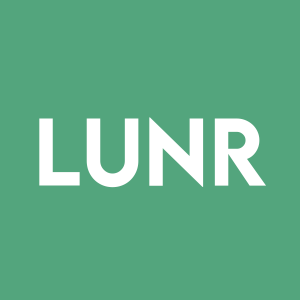Nokia’s Cellular Network Ready for Moon as Intuitive Machines Completes Final Lunar Lander Installation
Rhea-AI Summary
Intuitive Machines (LUNR) and Nokia (NOK) have successfully completed the final integration of Nokia's Lunar Surface Communication System (LSCS) into the IM-2 mission lander, Athena. The system will establish the first cellular network on the Moon's south pole region.
The LSCS 'network in a box' features 14 thermally isolated mounting points and is integrated into Athena's Thermal Protection System. Two device modules have been installed in lunar vehicles: Intuitive Machines' Micro-Nova Hopper and Lunar Outpost's MAPP rover. The system uses 4G/LTE technology adapted for lunar conditions to handle surface connectivity, HD video streaming, and data transmission.
The Micro-Nova Hopper will test sensor instruments to identify lunar resources like water ice, while the MAPP rover will conduct surface exploration and collect environmental data. The mission launch is targeted for late February from NASA's Kennedy Space Center.
Positive
- First-ever lunar cellular network deployment, positioning LUNR at the forefront of lunar communications infrastructure
- Strategic partnership with Nokia and NASA's Space Technology Mission Directorate
- Potential revenue stream from lunar data transmission services
- Advanced technological capabilities for lunar resource identification and mapping
Negative
- High-risk mission with multiple technical challenges
- Success dependent on successful launch and landing operations
- Complex thermal management requirements could affect system reliability
News Market Reaction 1 Alert
On the day this news was published, LUNR declined 8.69%, reflecting a notable negative market reaction.
Data tracked by StockTitan Argus on the day of publication.
HOUSTON, Jan. 07, 2025 (GLOBE NEWSWIRE) -- Today Intuitive Machines, Inc. (Nasdaq: LUNR, LUNRW) (“Intuitive Machines”) and Nokia (NYSE: NOK, Euronext: NOKIA) announced the successful final integration of Nokia’s Lunar Surface Communication System (“LSCS”) into the IM-2 mission lander, named Athena. Athena and the LSCS will voyage to the lunar south pole region in the upcoming IM-2 mission, where Nokia and Intuitive Machines intend to deploy the first cellular network on the Moon.
After months of testing and validation with Nokia Bell Labs, Intuitive Machines engineers installed the LSCS “network in a box” to one of Athena’s upper carbon-composite panels. Multiple precautions were taken during the installation to help ensure that the network will safely make the 239,000-mile journey to the Moon, survive the stresses of take-off and landing, and operate optimally on the lunar surface. Each of the 14 mounting points is thermally isolated to keep the network insulated from the extremely low temperatures of deep space. Intuitive Machines also integrated the network into Athena’s Thermal Protection System. This system will expel heat when the network is operating, and it will supply heat to protect the network when it is idle.

Two device modules make up additional components of Nokia’s LSCS, and they have been installed in two lunar mobility vehicles: Intuitive Machines’ Micro-Nova Hopper and Lunar Outpost’s Mobile Autonomous Prospecting Platform (MAPP) rover. Upon landing on the Moon, the two vehicles are designed to deploy on the lunar surface where they would immediately use the Nokia device modules to establish connections to the network on Athena.
The LSCS utilizes the same 4G/LTE cellular technology used by billions of devices on Earth, though Nokia Bell Labs reconceptualized the system to meet the unique requirements of a lunar mission. The network is engineered to handle surface connectivity between the lander and vehicles, carrying high-definition video streaming, command-and-control communications and telemetry data. Intuitive Machines expects to relay data from the LSCS back to Earth using its direct-to-Earth data transmission service.
“We intend to prove that cellular technologies can provide the reliable, high-capacity and efficient connectivity needed for future crewed and uncrewed missions to the Moon and eventually Mars,” said Thierry E. Klein, President of Bell Labs Solutions Research at Nokia. “Cellular technology has irrevocably transformed the way we communicate on Earth. There’s no reason it can’t do the same for communications on other worlds.”
Nokia Bell Labs developed the LSCS and Intuitive Machines created the Micro-Nova Hopper in partnership with NASA’s Space Technology Mission Directorate via its Tipping Point initiative, which funds industry-developed space technologies that can foster the development of commercial space capabilities and benefit future NASA missions. One of the goals of Intuitive Machines’ second lunar mission will be to use the Micro-Nova Hopper and the LSCS to test new sensor instruments that could help identify and map precious resources on the Moon, like water ice. The Micro-Nova Hopper, named Grace, is designed to descend into permanently shadowed lunar craters. There it may use these new sensors to scan for large concentrations of hydrogen, which are indicative of ice deposits. All data collected by the Micro-Nova would then be transmitted over the Nokia network to Athena, where it would be relayed back to Earth.
The Mobile Autonomous Prospecting Platform (MAPP) rover was developed by Lunar Outpost. Once on the lunar surface, the MAPP rover is designed to exit from a protective enclosure on Athena, extend its antennas, and establish a connection to Nokia’s cellular network on Athena. The MAPP rover will then begin a multi-day journey exploring the Moon's south pole region, mapping the lunar surface while collecting stereo imagery and vital environmental data along the way.
“We believe delivering Nokia’s 4G/LTE system to the lunar surface is a transformative moment in the commercialization of space and the maturity of the lunar economy,” said Intuitive Machines CEO Steve Altemus. “We’re taking thoughtful steps to achieve sustainability. Whether it’s Nokia connecting surface assets, or Intuitive Machines’ ability to transmit that data back to Earth and establish lunar data relay satellites, these innovations are mainstay capabilities we believe will define the Artemis generation, and they were initiated through NASA leadership.”
Launch of Intuitive Machines’ Athena lander is targeted for no earlier than late February from NASA’s Kennedy Space Center.
About Intuitive Machines
Intuitive Machines is a diversified space exploration, infrastructure, and services company focused on fundamentally disrupting lunar access economics. In 2024, Intuitive Machines successfully landed the Company’s Nova-C class lunar lander, Odysseus, on the Moon, returning the United States to the lunar surface for the first time since 1972. The Company’s products and services are offered through its four in-space business units: Lunar Access Services, Orbital Services, Lunar Data Services, and Space Products and Infrastructure. For more information, please visit intuitivemachines.com.
About Nokia
At Nokia, we create technology that helps the world act together.
As a B2B technology innovation leader, we are pioneering networks that sense, think and act by leveraging our work across mobile, fixed and cloud networks. In addition, we create value with intellectual property and long-term research, led by the award-winning Nokia Bell Labs.
With truly open architectures that seamlessly integrate into any ecosystem, our high-performance networks create new opportunities for monetization and scale. Service providers, enterprises and partners worldwide trust Nokia to deliver secure, reliable and sustainable networks today – and work with us to create the digital services and applications of the future.
About Lunar Outpost
Lunar Outpost is the industry leader in space robotics, planetary mobility, and space resources. We are on a mission to enable an extended human presence in space and harness the vast resources in space to drive positive impact on Earth. With multiple rovers headed to the Moon for exploration and infrastructure development, and technologies creating oxygen on Mars, our impact spans the solar system. Lunar Outpost’s mobility and robotic systems, including the exploration-class Mobile Autonomous Prospecting Platform (MAPP), are set to power the New Space economy. Through innovation and key partnerships, Lunar Outpost delivers value to humanity, both in space and on Earth.
Forward-Looking Statements
This press release includes “forward-looking statements” within the meaning of the Private Securities Litigation Reform Act of 1995, as amended. These statements that do not relate to matters of historical fact should be considered forward looking. These forward-looking statements generally are identified by the words such as “anticipate,” “believe,” “continue,” “could,” “estimate,” “expect,” “intend,” “may,” “might,” “plan,” “possible,” “potential,” “predict,” “project,” “should,” “strive,” “would,” “strategy,” “outlook,” the negative of these words or other similar expressions, but the absence of these words does not mean that a statement is not forward-looking. These forward-looking statements include but are not limited to statements regarding: Intuitive Machines expectations regarding the timing and success of its IM-2 mission; revenue for government contracts awarded to us; our operations, our financial performance and Intuitive Machines industry; business strategy, business plan, and plans to drive long-term sustainable shareholder value; information regarding our expectations on revenue generation and cash. These forward-looking statements reflect Intuitive Machines’ predictions, projections, or expectations based upon currently available information and data. Intuitive Machines actual results, performance or achievements may differ materially from those expressed or implied by the forward-looking statements, and you are cautioned not to place undue reliance on these forward-looking statements. The following important factors and uncertainties, among others, could cause actual outcomes or results to differ materially from those indicated by the forward-looking statements in this press release: Intuitive Machines risk factors detailed under the section titled Part I, Item 1A. Risk Factors of our Annual Report on Form 10-K for the fiscal year ended December 31, 2023 filed with the Securities and Exchange Commission (the “SEC”), the section titled Part I, Item 2, Management’s Discussion and Analysis of Financial Condition and Results of Operations and the section titled Part II. Item 1A. “Risk Factors” in Intuitive Machines most recently filed Quarterly Report on Form 10-Q, and in our subsequent filings with the SEC, which are accessible on the SEC's website at www.sec.gov.
These forward-looking statements are based on information available as of the date of this press release and current expectations, forecasts, and assumptions, and involve a number of judgments, risks, and uncertainties. Accordingly, forward-looking statements should not be relied upon as representing our views as of any subsequent date, and we do not undertake any obligation to update forward-looking statements to reflect events or circumstances after the date they were made, whether as a result of new information, future events, or otherwise, except as may be required under applicable securities laws.
Contacts
For investor inquiries:
investors@intuitivemachines.com
For media inquiries:
Nokia Press Office:
A photo accompanying this announcement is available at https://www.globenewswire.com/NewsRoom/AttachmentNg/3b132f2a-b08f-4be3-a2f6-5759857de035.








